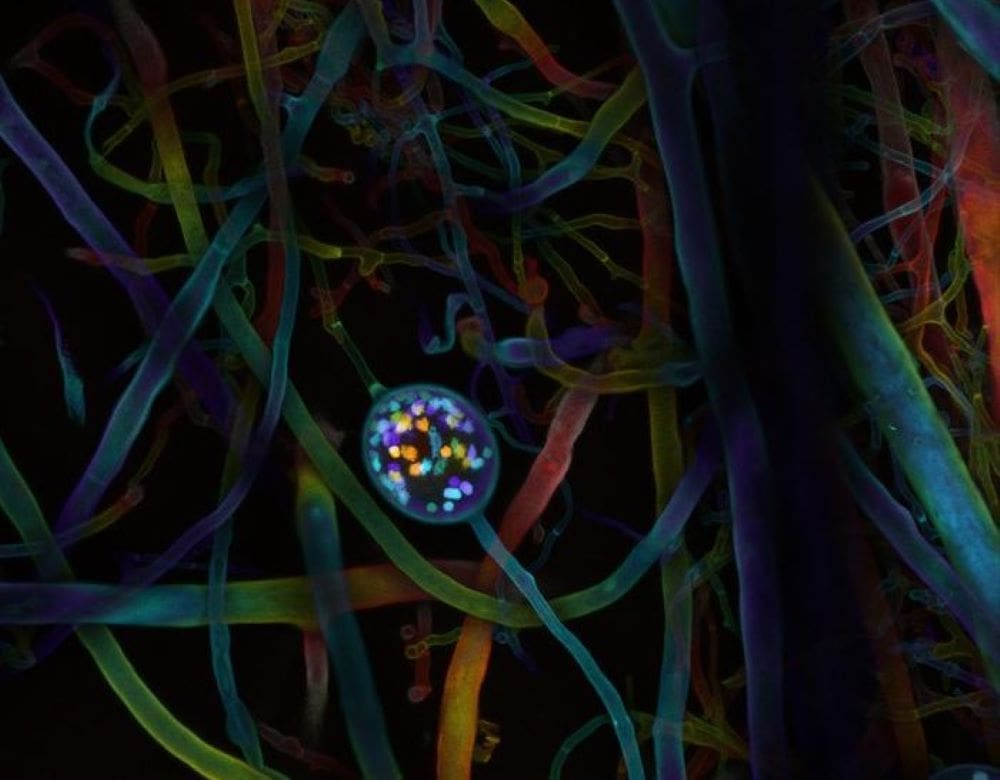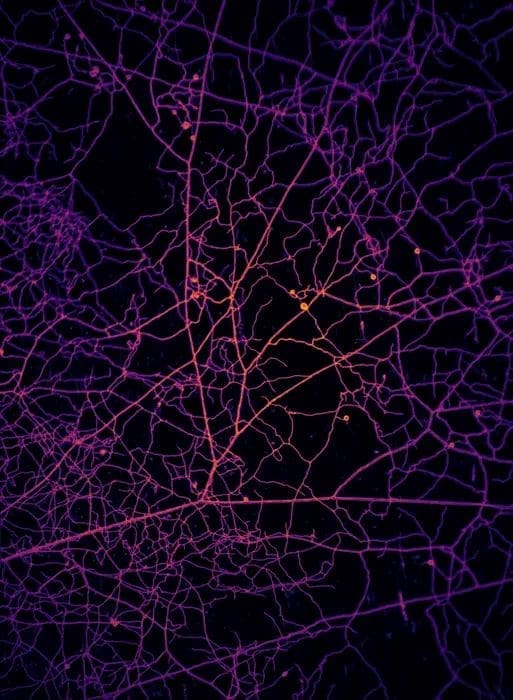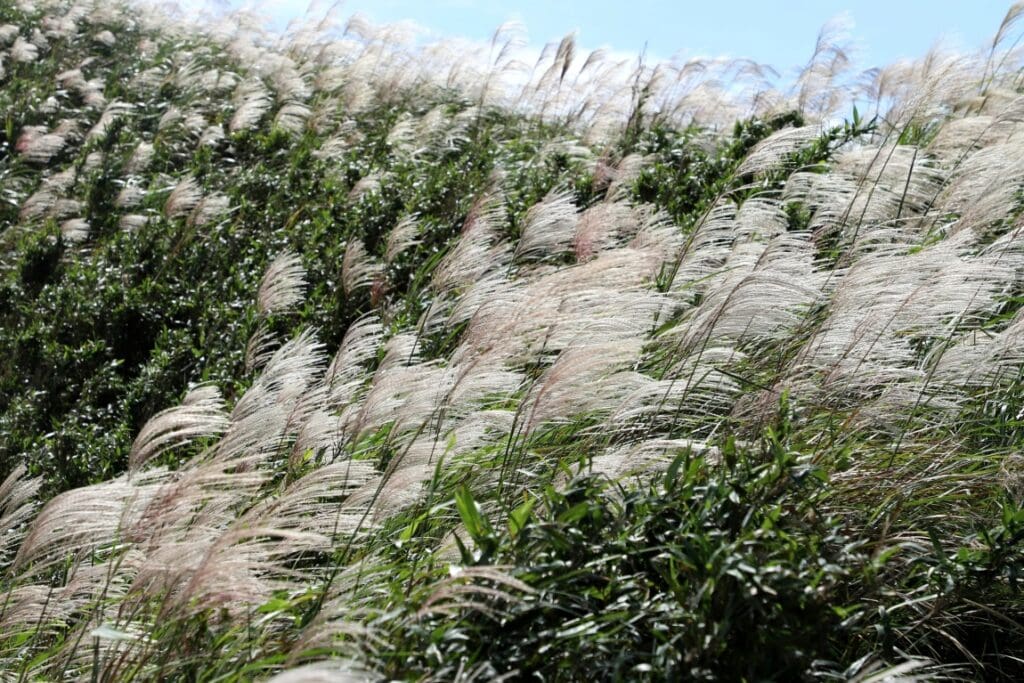Summary:
A team of international scientists has taken a groundbreaking step in understanding the intricate trade networks between plants and mycorrhizal fungi, revealing the hidden strategies these organisms use to build and maintain efficient underground supply chains.
Published in the journal Nature, the study unveils how fungi construct decentralized, self-regulating networks that transport essential nutrients and carbon between plant roots and the soil. By utilizing a custom-designed imaging robot capable of capturing over 500,000 fungal nodes and tracking 100,000 cytoplasmic flow trajectories, researchers were able to visualize the dynamic, wave-like growth patterns of mycelium.
This technology allowed the team to observe the formation of nutrient-rich “trunk routes” and microscopic pathfinders that explore new territories in search of additional plant partners. The findings illuminate a sophisticated balance between energy investment and resource distribution, shedding light on how these ancient organisms have optimized their networks over 450 million years of evolution.
The study not only advances our fundamental understanding of plant-fungal interactions but also offers potential insights into the design of more efficient human-made supply chains, drawing parallels with modern AI-driven logistics and resource management. This breakthrough paves the way for future research in ecosystem engineering and sustainable agriculture.

Scientists build robot to track plant-fungal trade networks, revealing nature’s underground supply chains
New research uses advanced robotics to track the hyper-efficient supply chains formed between plants and mycorrhizal fungi as they trade carbon and nutrients across the complex, living networks that help regulate Earth’s atmosphere and ecosystems.
Travelling waves, traffic flows, and navigating pathfinders
Understanding plant-fungal trade is urgent because these fungal networks draw down around 13 billion tons of CO2 per year into the soil — equivalent to ~1/3 of global energy-related emissions. More than 80% of plant species on Earth form partnerships with mycorrhizal fungi, in which phosphorus and nitrogen collected by fungi is exchanged for plant carbon. Despite their global importance, scientists did not understand how these brainless organisms construct expansive and efficient supply chains across their underground networks.

Using a custom-built imaging robot, the international research team of 28 scientists discovered that the fungi construct a lace-like mycelial network that moves carbon outward from plant roots in a wave-like formation. To support this growth, fungi move resources to-and-from plant roots using a system of two-way traffic, controlling flow speed and width of these fungal highways as needed.
To seek further resources, the fungi deployed special growing branches as microscopic ‘pathfinders’ to explore new territory, appearing to favor trade opportunities with future plant partners over short-term growth within immediate surroundings. The researchers describe how these behaviors appear to be coordinated by simple, local “rules” that prevent the fungus from “over-building” and define a unique ‘travelling wave strategy’ for growth, resource exploration, and trade.
“We’ve been mapping the decentralized decision-making processes of mycorrhizal fungal networks, exposing a hyper-efficient blueprint for an underground supply chain,” said Evolutionary Biologist and co-author Dr. Toby Kiers of Amsterdam’s Vrije Universiteit. “Humans increasingly rely on AI algorithms to build supply chains that are efficient and resilient.
“Yet mycorrhizal fungi have been solving these problems for more than 450 million years. This is the kind of research that keeps you up at night because these fungi are such important underground circulatory systems for nutrients and carbon.”
Advanced robotics to track fungal decision-making
Discovering these new fungal behaviors was only possible because the team built an imaging robot that ran 24/7 in Amsterdam, allowing measurements of how the fungi reshaped their trade routes over time and space. “We discovered that these fungi are constantly adapting their trade routes, adding loops to shorten paths so they could efficiently deliver nutrients to plant roots” said Dr. Thomas Shimizu, co-author and Biophysicist from the physics institute AMOLF in Amsterdam.
Similar to navigation apps tracking congestion, the team then measured “traffic flows” at specific coordinates in the fungal road system, quantifying how fast resources were flowing to and from the root, tracking more than 100,000 particle flows. “By using our robot instead of a human being, we cut the lab time from a century to around three years,” added Shimizu.
“Robotics is making it possible to study fungal behavior in unprecedented detail, and at an unprecedented scale,” said co-author Dr. Merlin Sheldrake. “These techniques open the door to future work to understand the ways that these living, sensing, networks regulate ecosystem function and the Earth’s nutrient cycles.”
Data critical for understanding carbon draw down
The data collected are becoming increasingly important as atmospheric CO2 increases. Scientists want to understand how fungal networks control flows of carbon belowground. Kiers, also Executive Director of the Society for the Protection of Underground Networks (SPUN), the non-profit organization mapping Earth’s mycorrhizal networks adds: “Because these fungal networks are key entry points of carbon into global soils, we can now explore what triggers fungi to increase carbon flows underground.”
As in human supply chains, the efficiency of mycorrhizal fungal supply-chains depends on the ability of a network to produce and deliver goods to the right place, at the right time, at the lowest possible cost. Dr. Howard Stone, co-author and Professor of Mechanical and Aerospace Engineering at Princeton University adds: “Understanding how these fungal networks adjust internal flows and resource trading to build supply chains in response to environment stimuli will be an important direction for future research.”
Whether and how designers of human-built supply chains can learn from these principles evolved by plants and fungi over hundreds of millions of years is an exciting frontier. The team is now in the final stages of building a new robot which will increase data collection by a further 10x, allowing them to explore how fungal networks respond to rapid environmental change, including increases in disturbance and rising temperatures.
***
Research funded by the Human Frontier Science Program (HFSP), Netherlands Organization for Scientific Research (NWO), the Grantham Foundation, the Paul Allen Foundation, and the Schmidt Family Foundation.
See the authors discuss their work in a video, here.
Journal Reference:
Oyarte Galvez, L., Bisot, C., Bourrianne, P. et al., ‘A travelling-wave strategy for plant–fungal trade’, Nature (2025). DOI: 10.1038/s41586-025-08614-x
Article Source:
Press Release/Material by Society for the Protection of Underground Networks (SPUN)
Featured image: Network of arbuscular mycorrhizal fungal network with a muti-nucleate reproductive spore imaged with a fluorescent dye and confocal microscopy. The image, derived from hundreds of z-stacks, uses pseudo-coloration to indicate depth, with blue being closer and red farther from the observer. Credit: Vasilis Kokkoris | VU Amsterdam | AMOLF | SPUN



